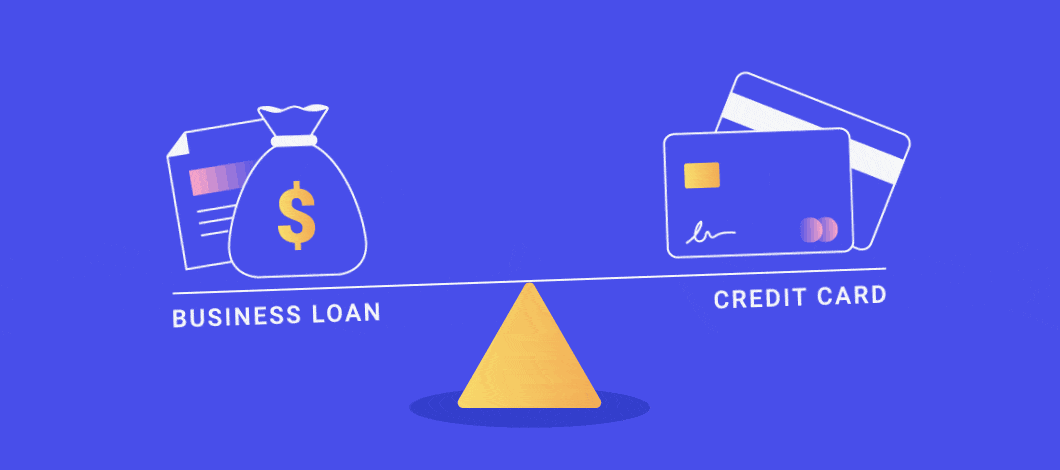Starting or expanding a business often requires capital, and for many entrepreneurs, a business loan is a vital source of funding. But what exactly is a business loan, how does it work, and what should business owners know before applying? This comprehensive guide will break down everything you need to know about business loans, including types, eligibility, the application process, benefits, and risks.
Key Takeaway
A business loan is a sum of money borrowed by a business from a lender that must be repaid with interest over a specified period. It serves as a financial tool to support business growth, manage cash flow, or cover operating expenses. Understanding the types of loans, how interest works, repayment terms, and eligibility criteria can help business owners make informed decisions and successfully leverage loans to fuel their business ambitions.
What Is a Business Loan?
A business loan is a type of financing provided to companies to help fund business activities such as starting up, expanding operations, purchasing equipment, or managing day-to-day expenses. Unlike personal loans, which are based on an individual’s creditworthiness, business loans focus on the business’s ability to repay and often consider the business’s revenue, credit history, and collateral.
Business loans are typically offered by banks, credit unions, online lenders, and sometimes government agencies. The loan amount, interest rate, repayment schedule, and collateral requirements can vary widely depending on the lender, loan type, and the borrower’s financial situation.
How Does a Business Loan Work?
At its core, a business loan works by borrowing a specific amount of money from a lender, which must be repaid in installments over time with an added interest fee. Here’s a step-by-step look at how business loans generally function:
1. Application Process
The business owner applies for the loan by submitting necessary documentation, including financial statements, business plans, credit reports, and tax returns. The lender evaluates the application to assess risk.
2. Loan Approval and Terms

If approved, the lender offers loan terms detailing the loan amount, interest rate, repayment schedule, and fees. The business owner reviews and accepts these terms before signing the agreement.
3. Disbursement of Funds
Once the agreement is signed, the lender transfers the loan amount to the business’s bank account.
4. Repayment
The borrower repays the loan through regular payments (monthly, quarterly, etc.), which include principal and interest. Timely repayment is crucial to avoid penalties and maintain creditworthiness.
5. Loan Closure
After the loan is fully repaid, the agreement ends. If collateral was involved, it is released back to the borrower.
Types of Business Loans
Business loans come in various forms, each designed for specific purposes and borrower profiles. Here are some of the most common types:
Term Loans
These are traditional loans where a business borrows a lump sum and repays it over a fixed period with interest. Term loans can be short-term (less than a year), medium-term (1–3 years), or long-term (more than 3 years).
SBA Loans
Backed by the U.S. Small Business Administration, SBA loans offer favorable terms and lower interest rates but usually require extensive paperwork and longer approval times.
Business Lines of Credit
This flexible loan option lets businesses borrow up to a certain limit and only pay interest on the amount drawn, similar to a credit card.
Equipment Financing
Loans specifically designed to purchase business equipment, where the equipment itself often serves as collateral.
Invoice Financing
Allows businesses to borrow money against outstanding invoices, improving cash flow.
Merchant Cash Advances
A lump sum is provided upfront in exchange for a percentage of future credit card sales.
Eligibility Criteria for Business Loans
Lenders typically assess the following before approving a business loan:
- Credit Score: Both the business’s and the owner’s credit scores matter.
- Business History: Older businesses with proven track records have better chances.
- Financial Health: Profitability, revenue, cash flow, and debt-to-income ratio are key metrics.
- Collateral: Some loans require assets to secure the loan.
- Business Plan: A clear plan showing how the loan will be used and repaid.
How to Apply for a Business Loan
Applying for a business loan requires preparation:
- Determine Your Needs: Understand why you need the loan and how much.
- Research Loan Options: Compare lenders, interest rates, and terms.
- Prepare Documents: Gather financial statements, tax returns, business licenses, and credit reports.
- Submit Application: Complete the application and submit all required documents.
- Review Loan Offers: Carefully review terms, rates, and repayment schedules.
- Accept Loan and Use Funds Wisely: Sign the agreement and use the funds according to your plan.
Benefits of Business Loans

- Access to Capital: Enables growth, hiring, and equipment purchases.
- Flexible Terms: Many loan options allow tailored repayment plans.
- Build Credit: Timely repayment can improve business credit scores.
- Retain Ownership: Unlike investors, loans don’t dilute ownership.
Risks and Considerations
- Debt Burden: Loans must be repaid regardless of business success.
- Interest Costs: Borrowing can be expensive over time.
- Collateral Risk: Failure to repay may lead to asset loss.
- Approval Challenges: Not all businesses qualify easily.
What Are the Different Types of Business Loans and Which One Is Right for Your Business?
Description:
This article will dive deep into the variety of business loan products available in today’s market—from traditional term loans, SBA loans, and lines of credit, to specialized loans like equipment financing, invoice factoring, and merchant cash advances. The article should explain each loan’s purpose, eligibility, pros and cons, typical terms, and ideal use cases. It can include comparative tables to help businesses identify which loan type aligns best with their specific financial needs, business stage, and industry.
You can also explore how emerging fintech lenders and online platforms are reshaping access to financing with faster approvals and more flexible terms. By the end, readers should feel equipped to evaluate their options and choose a loan product that supports their growth without undue financial strain.
How to Prepare a Successful Business Loan Application: Tips and Common Mistakes to Avoid
Description:
Applying for a business loan can be daunting, especially for first-time borrowers. This topic focuses on guiding entrepreneurs step-by-step through the application process, highlighting critical preparation tasks like gathering financial documents, building a strong business plan, improving credit scores, and demonstrating cash flow stability.
The article will also address common pitfalls such as underestimating loan amounts needed, ignoring eligibility requirements, providing incomplete documentation, or misunderstanding loan terms. Tips for improving approval odds, such as working with a financial advisor, establishing business credit, and shopping around for lenders, add practical value.
Including real-world examples or case studies of successful and unsuccessful applications can make the content relatable and actionable.
Understanding Interest Rates and Fees on Business Loans: What You Need to Know Before Borrowing
| Fee Type | Description | Typical Cost | Impact on Borrower |
|---|---|---|---|
| Origination Fee | Charged by lender for processing the loan application | 1% to 5% of loan amount | Reduces the net amount received; upfront cost |
| Prepayment Penalty | Fee for paying off the loan early | Varies; sometimes 1-3% of balance | Discourages early repayment; adds cost if you refinance |
| Late Payment Fee | Charged if you miss a payment or pay late | Fixed amount or % of overdue payment | Increases overall loan cost; can damage credit score |
| Closing Costs | Fees related to legal, appraisal, and administrative expenses | $500 to $3,000+ | Upfront expense; may be negotiable |
| Underwriting Fee | Fee for loan approval and risk assessment | $300 to $1,000 | Part of processing costs |
| Documentation Fee | Charges for preparing loan documents | $100 to $500 | Small additional cost |
| Broker Fee | Paid if a loan broker is involved | 1% to 2% of loan amount | Additional cost, often negotiable |
How to Use a Business Loan to Fuel Growth: Strategies and Best Practices
Description:
Taking out a loan is only half the battle — using it wisely is what drives business success. This article should focus on strategic ways to leverage business loans effectively. It can cover areas such as investing in marketing, hiring key talent, purchasing inventory in bulk, expanding product lines, or upgrading technology.
The article might include budget planning advice, forecasting cash flow to ensure loan repayments are manageable, and using loan proceeds to generate measurable ROI. Real-life business examples and success stories highlight best practices and pitfalls to avoid.
Additionally, it can discuss balancing growth with risk management and how to prepare for loan repayments during slower revenue periods.
What Are the Alternatives to Business Loans? Exploring Other Financing Options for Small Businesses
Description:
While business loans are popular, they aren’t the only way to raise capital. This article explores alternative financing options including equity funding, crowdfunding, grants, business credit cards, invoice factoring, and peer-to-peer lending.
Each alternative can be analyzed in terms of suitability, pros and cons, eligibility, costs, and risks. For example, equity financing doesn’t require repayment but dilutes ownership, while crowdfunding depends on marketing efforts and public interest.
By understanding these options, business owners can make informed decisions about when to use loans and when alternative financing may be more beneficial.
How to Build Business Credit to Qualify for Better Loan Terms

Description:
Business credit is often overlooked but is crucial for securing favorable loan terms. This article educates readers on what business credit is, how it differs from personal credit, and why it matters.
It should cover how to establish business credit by registering your business properly, obtaining an EIN, opening business bank accounts, using vendor credit lines, and timely payment of bills.
The piece can also provide practical steps to monitor credit reports, dispute inaccuracies, and maintain good credit scores. Tips for small and new businesses on building credit from scratch can be especially helpful.
How Do Government-Backed Small Business Loans Work? Benefits and Application Process
Description:
Government-backed loans like SBA loans offer many benefits including lower rates, longer repayment terms, and less stringent qualifications, but their processes are more involved.
This article will explain how these loans work, who qualifies, the types of SBA loans available, and their advantages and disadvantages compared to conventional loans.
You can also provide a detailed breakdown of the application process, required documentation, timelines, and tips for improving chances of approval. Including examples of businesses that have benefited from SBA loans would make the article more compelling.
The Impact of Business Loans on Your Financial Statements: What Every Business Owner Should Know
Description:
This topic explains how loans appear on a business’s financial statements—balance sheet, income statement, and cash flow statement—and what impact they have on business financial health.
It should cover:
- How loan proceeds and repayments affect cash flow.
- Interest expenses and their influence on profitability.
- Debt-to-equity ratios and their role in financial analysis.
- How to use financial ratios to assess loan sustainability.
The article can provide examples with numbers and charts for clarity, and explain why lenders and investors scrutinize these statements closely when assessing business risk.
How to Refinance a Business Loan: When and How to Do It Right
Description:
Refinancing a business loan can reduce interest costs, improve cash flow, or adjust payment schedules. This article covers signs that it’s time to refinance, such as high interest rates or cash flow challenges.
It will also walk through the refinancing process, including assessing current loan terms, comparing new loan offers, understanding fees, and preparing documentation.
The article can highlight benefits and risks, with advice on negotiating terms and avoiding refinancing pitfalls that could increase overall costs.
How Covid-19 Has Changed the Business Loan Landscape: New Opportunities and Challenges
Description:
The pandemic altered the way businesses access Financing, with new programs, changing lender criteria, and economic uncertainty impacting loan availability.
This article explores how business loan products have evolved, including emergency loans like the Paycheck Protection Program (PPP), shifts to online lending, and new government support initiatives.
It also discusses challenges businesses face today in qualifying for loans and strategies to navigate this changing environment effectively.
Also Read : Can Student Loans Open Doors or Create Debt Traps?
Conclusion
A business loan is a powerful financial tool that, when used responsibly, can provide the capital necessary for a business to start, grow, and thrive. Understanding how business loans work—from application to repayment—helps business owners make informed decisions and select the loan option that best fits their needs. While loans come with risks, careful planning and management can mitigate these risks and open doors to new opportunities.
FAQs
1. What is the difference between a business loan and a business line of credit?
A business loan provides a lump sum amount that is repaid over time, while a line of credit allows borrowing up to a certain limit on an ongoing basis with interest paid only on the drawn amount.
2. How long does it take to get approved for a business loan?
Approval time varies from a few days to several weeks, depending on the lender and loan type. SBA loans typically take longer due to more rigorous checks.
3. Can startups get business loans?
Yes, but startups may face stricter eligibility criteria and higher interest rates due to higher perceived risk.
4. What happens if I miss a loan payment?
Missing payments can lead to penalties, higher interest, and damage to your credit score. In severe cases, the lender may seize collateral or take legal action.
5. Are there business loans with no collateral?
Yes, unsecured business loans exist but usually have higher interest rates and stricter requirements.
6. How is the interest rate on a business loan determined?
Interest rates depend on creditworthiness, loan amount, term length, market conditions, and lender policies.
7. Can I use a personal loan for my business instead of a business loan?
While possible, it’s generally not recommended because personal loans don’t build business credit and may carry higher interest rates or lower borrowing limits.



